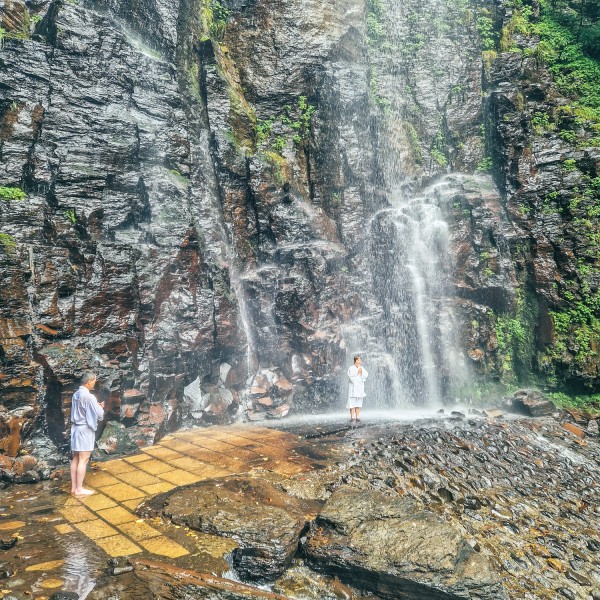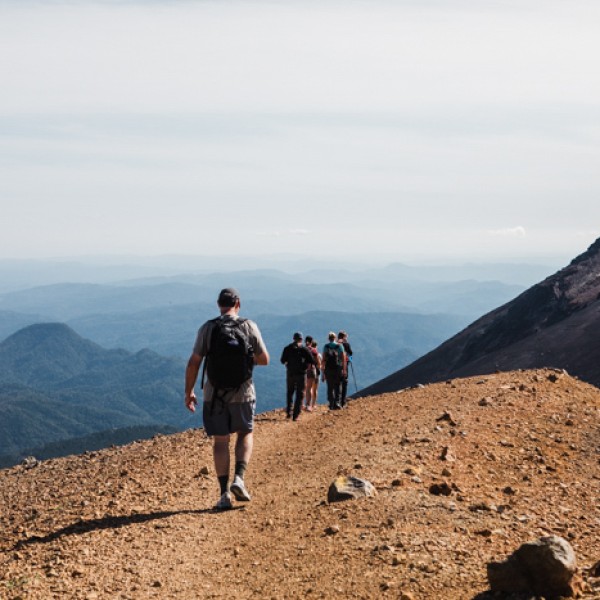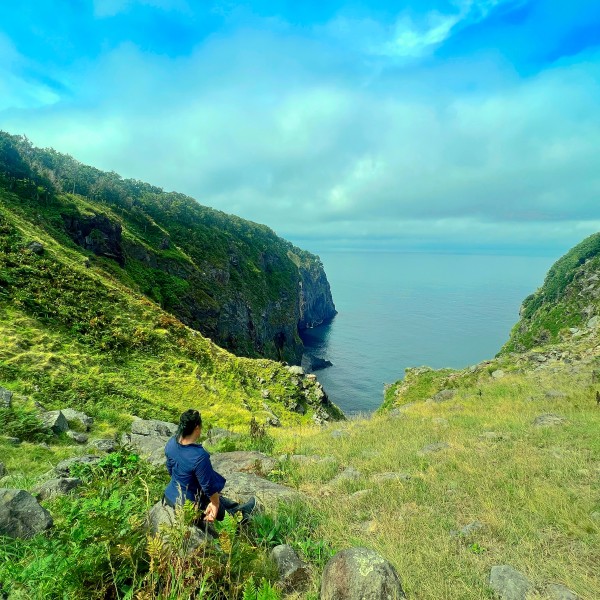By Claudia Laroye
I’m trying to match my cycling pace to the rhythmic hum of the cicadas. The incessant drone of Japan’s ‘symbol of summer’ - a ‘miiin miiin’ chirp of male minminzemis cicadas is the steady soundtrack of our ride island-hopping across the turbulent Seto Inland Sea between Shikoku Island and the Honshu mainland.
The heat of the day has released the chirping cacophony into a heady, nectarous cloud of Japanese honeysuckle, enveloping our cycling group in a thick, invisible floral pudding. The heat is oppressive, yet despite the sweat trickling down my back, I’ve never felt this happy being this hot.
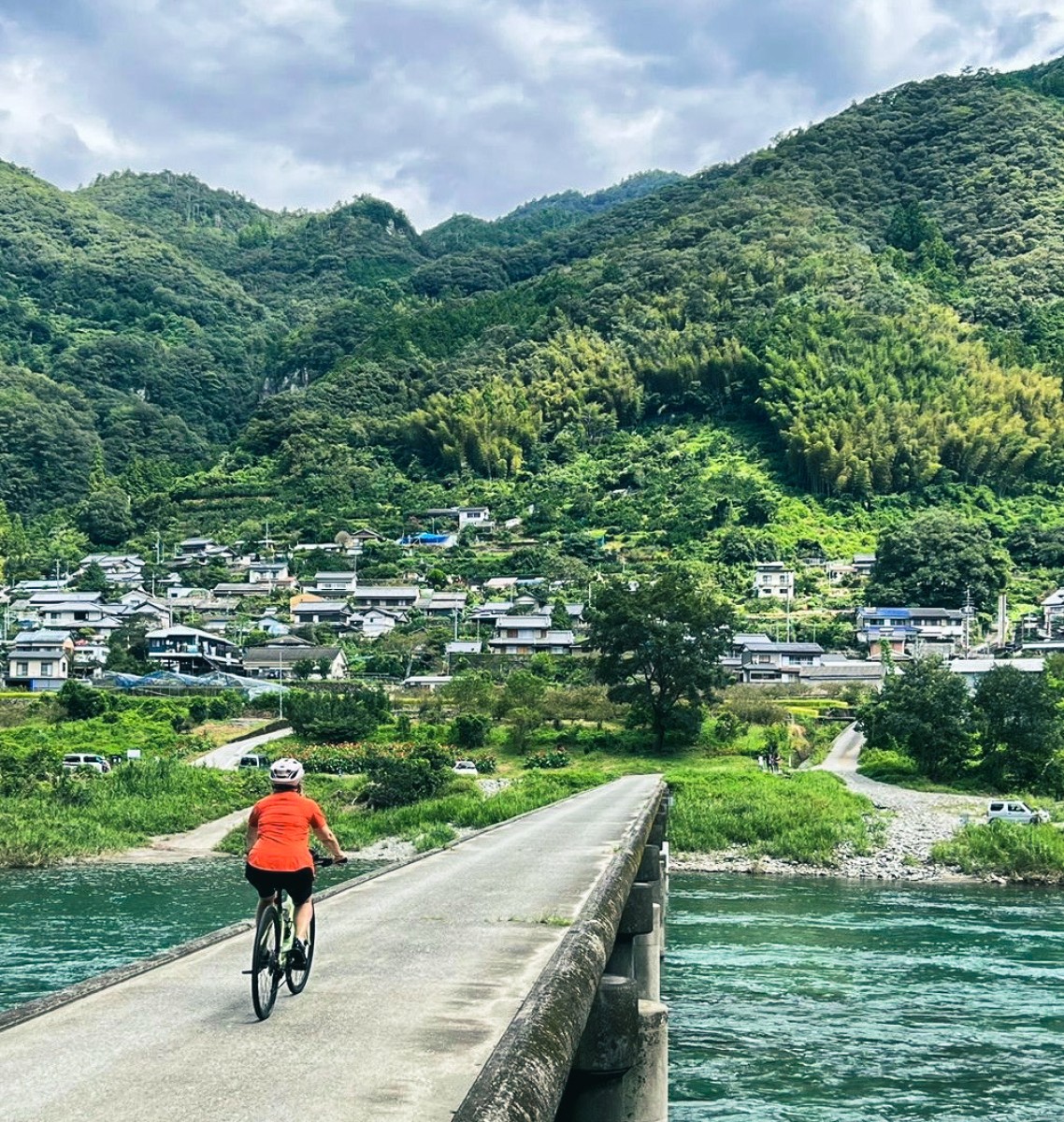
Cycling across a concrete chinka bashi bridge over the Niyodo River. These special bridges are built to be submerged and withstand flooding and monsoon rains.
My guide, Isao-san, explains that this sensation is kimochi ii – it feels good– And that’s what my time in Shikoku and Japan is doing, filling me with many very good feelings. This is only my second visit to Asia, and both times I’ve touched down in Japan. After hospitable Hokkaido and frenetic Tokyo, I was looking for a new Japanese experience. And I found it on Shikoku Island.
Shikoku, the smallest of Japan’s four main islands, is a short 90-minute flight south of Tokyo. The mountainous and mainly agricultural island is home to some of Japan’s oldest onsens, well-preserved samurai castles, the unique Shikoku Pilgrimage loop, culturally significant arts and crafts, and an orderly geometry of citrus, rice, and ginger plots.
For active travelers seeking the quieter yet still dynamic side of Japan’s outlying islands and prefectures, Shikoku Island represents a last frontier—a less-frequented destination where life moves at a slower, more traditional pace.
My journey is organized by Shikoku Tours, a company offering guided tours and customized itineraries on the island for foreign travelers since 2018 (the company was established in 2011). The company’s CEO and Founder, Rod Walters, shares that many of his clients are excited to explore the island and its community-based tourism providers on a slow travel schedule, and his guides are passionate about introducing the island, its people, places, and experiences to curious and adventurous travelers.
Our itinerary is big on active, self-propelled adventures, offering an amuse-bouche tasting menu of Shikoku’s roads less traveled. Cycling on an e-bike through Shikoku’s mountainous landscape is an ideal way to see and experience the island’s quiet beauty and impressive nature.
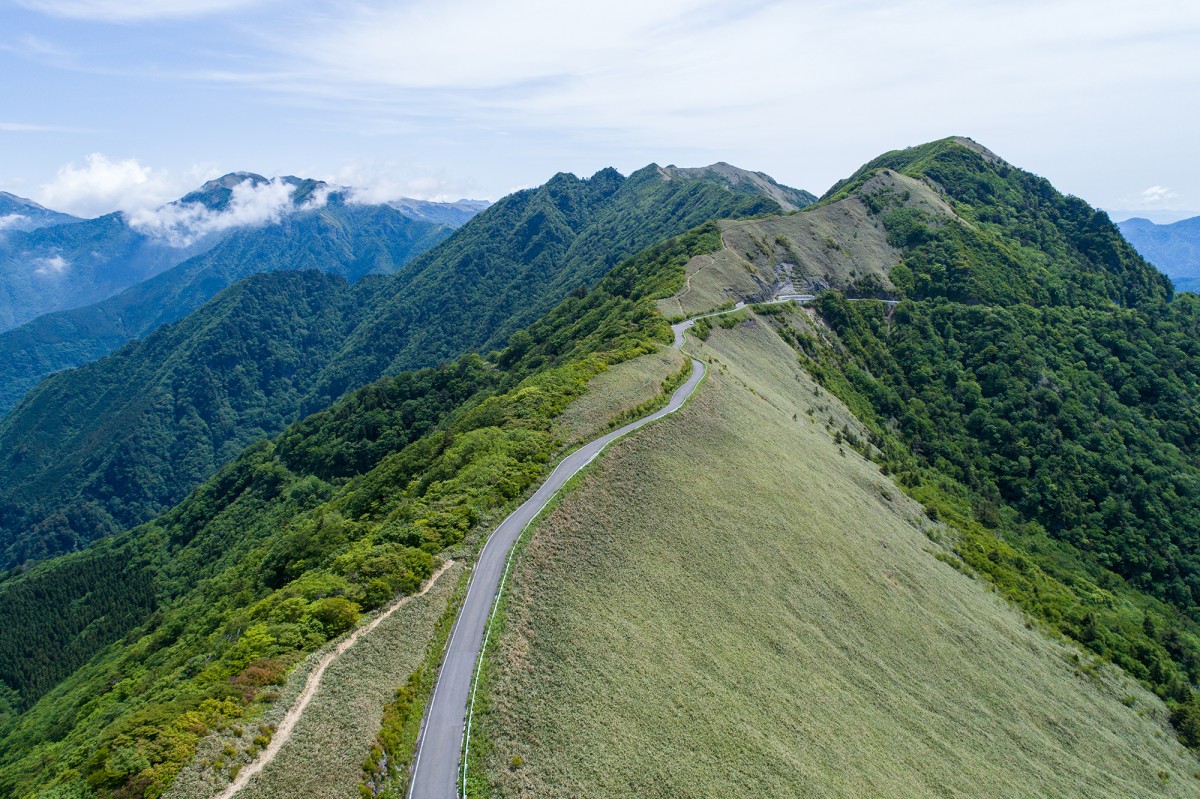
An aerial view of the nearby UFO Line winding along the Ishizuchi mountain range.
Ascending the scenic series of switchbacks of Mount Ishizuchi, known as the “Stone Hammer” for the rocky summit resembling a supersized version of the implement, I learn that this highest mountain on Shikoku is also one of Japan’s seven sacred peaks. The mountain has been the object of religious veneration for centuries, including practitioners of ascetic forms of Buddhism and the Shugendo sect, which combines Buddhist doctrine and Shinto beliefs.
Ishizuchi is also an important site along the Shikoku pilgrimage route, unique for its circular-shaped loop. The entire length of 745 mile/1,200 km can take months to complete, and many travelers tackle its circumference connecting 88 separate temples in stages.
Away from holy mountains, our cycling path winds along, and occasionally across, the brilliant blue of the Niyodo River. The river is one of the three major rivers on Shikoku, and its striking color and purity are the result of the lime-rich geology of its source on Mt. Ishizuchi, which filters out organic matter and leaves the water nearly transparent.
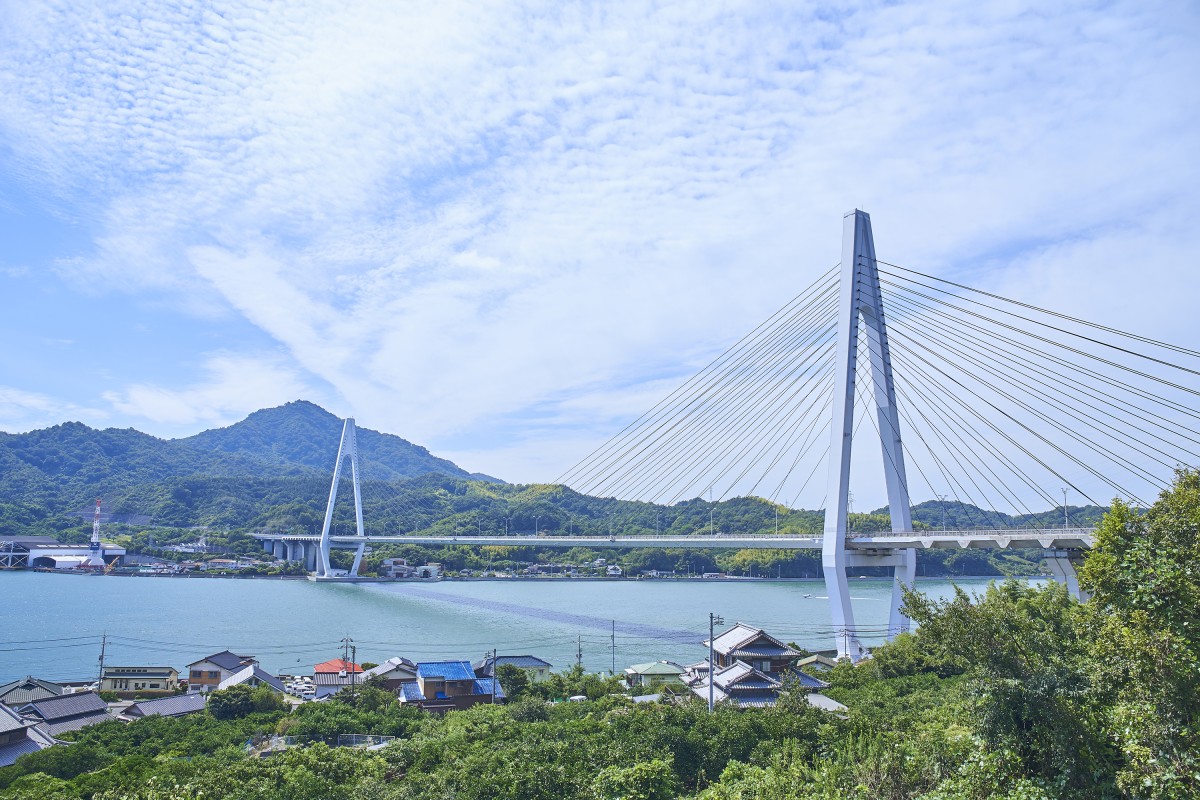
The Tatatra Bridge is one of the many bridges along the 60-kilometer-long road connecting Japan's main island of Honshu to the island of Shikoku, known as the Nishiseto Expressway.
We crisscross the Niyodo several times, including over grey concrete chinka bashi, low bridges without railings or parapets, built to be submerged and withstand floods or heavy monsoon rains. There are hundreds of these bridges in Japan, including 47 chinka-bashi on Shikoku’s Shimanto River, southwest of the city of Kochi.
The narrow bridges and country roads are shared with occasional vehicles, but most of the time, we have the routes to ourselves, making for a pleasant and relaxing ride where I have time to survey our surroundings. Sunlight dances on narrow pavement cut through groves of cypress, pine and willowy bamboo. The tall, heavy culms of bamboo bow as if in polite greeting, their heads heavy with the weight of summer leaves.
I catch glimpses of bright green rice paddies and neat rows of planted ginger, passing a small cluster of homes and a well-kept cemetery where an old man in blue rubber boots is taking a break from work, burning fragrant incense in front of a stone grave in honor of his ancestors.
This slow travel by bike allows me the chance to notice, savor and smell these small details and quiet moments, committing them to memory, and helping me appreciate how important details are in Shikoku and Japan: in the design of buildings, the rituals of Shinto ceremony, the art of washi papermaking, and of course, in the food.
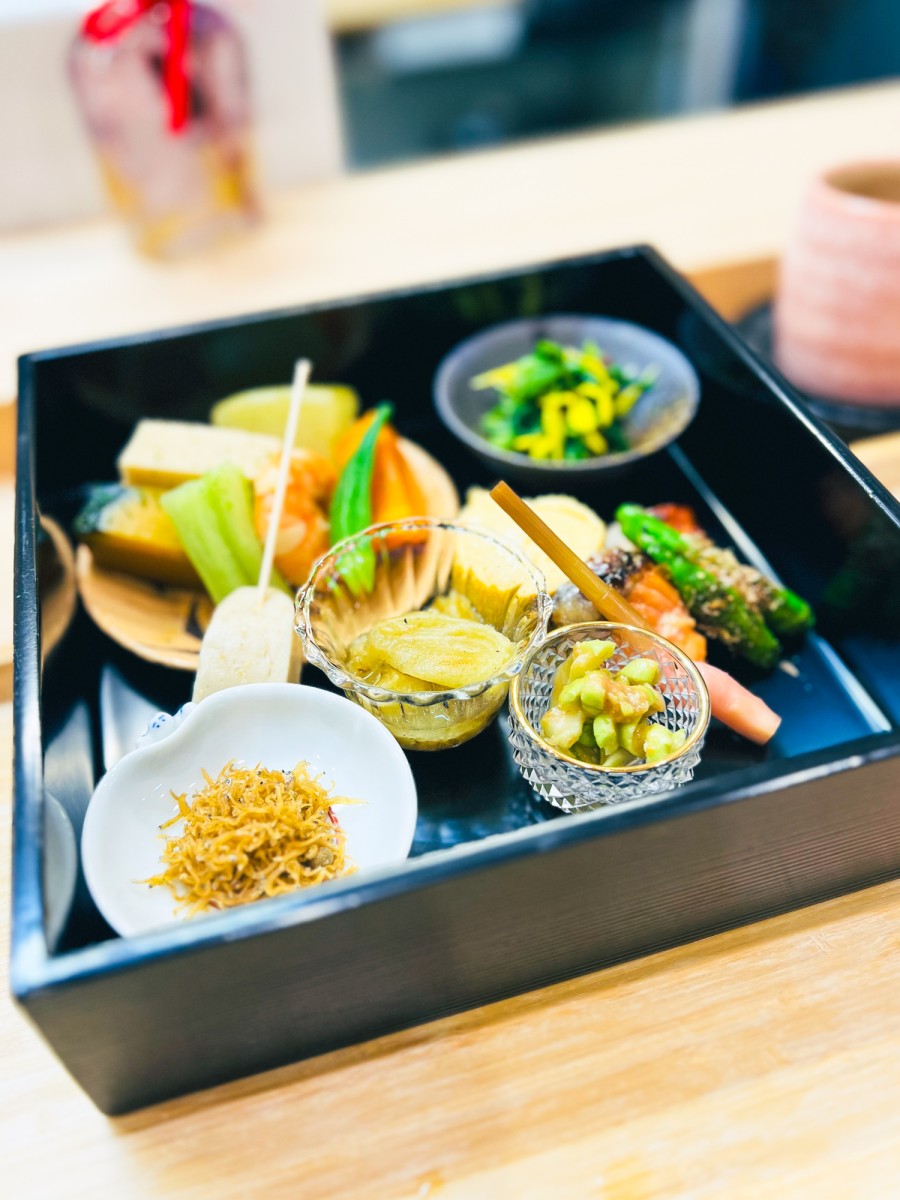
An exquisite bento box lunch is served at Uokane Restaurant in Ino, Kochi.
With its humid, temperate climate Shikoku is famous for its citrus cultivation, and our guides are justly proud to toast mornings with glasses of freshly squeezed orange juice from local groves. The island’s abundance of pristine rivers and proximity to the ocean ensures that seafood is included in nearly every meal. At this time of year ayu, sweet fish, a small freshwater fish often lightly battered, fried, and eaten whole, takes pride of place on island menus. Fortunately, our active adventures produce dynamic appetites and an appreciation for the artistry of Shikoku’s fine chefs.
At Uokane Restaurant in Ino, Kochi, Kyoto-trained Chef Hiroya Okazaki is meticulously preparing our lunch. Sitting at the bar, I benefit from a front-row seat view as he moves fluidly back and forth in his small kitchen, placing each exquisitely prepared piece of sweet fish, grilled vegetable, and mouth-puckering pickle into the black lacquered bento box.
The local ingredients are sourced from the fertile land and sea just miles from Chef Okazaki’s jewel-box restaurant. I gingerly pick up a pale green spiral of bitter melon and close my eyes, savoring each bite. It sounds like thunder, a feast for all five senses.
At the end of every day, and I confess, often at the beginning, I succumb to the pleasures of the onsen ritual. Dogo Onsen, Japan’s oldest hot springs, dates back 3,000 years, though the current facility was built in 1894. Located in the main tourist hub of Matsuyama, the onsen consists of large public hot spring baths and a galleria of eclectic shops and restaurants. This historic onsen is said to have inspired the bathhouse in Hayao Miyazaki’s film Spirited Away.
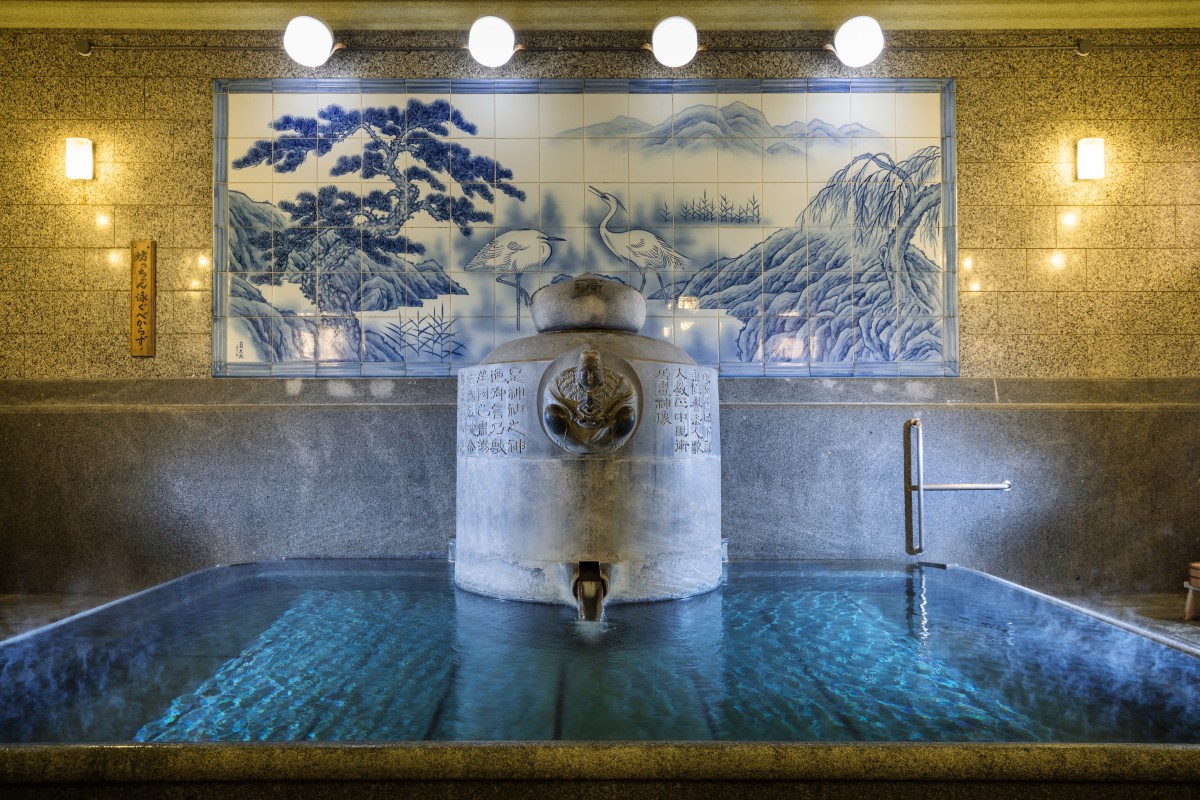
Onsen culture is of great importance to residents of Shikoku. Located in Matsuyama, this bathhouse is considered one of the oldest onsens in Japan.
Blissfully soaking in the scalding water, I reflect on the very good feelings that have bubbled to the surface during my time on Shikoku. I’ve only just begun to sample the cultural, culinary, and country pleasures that Shikoku Island has to offer, but I hope it’s the start of many return visits - and sustained kimochi ii - on this surprising and wonderfully unpretentious island.
Claudia Laroye is an award-winning freelance writer, author, and content creator living in Vancouver, British Columbia. Contributing writers to this destination series were hosted on adventures throughout Japan as part of the Adventure Travel World Summit 2023 in Hokkaido, Japan.
